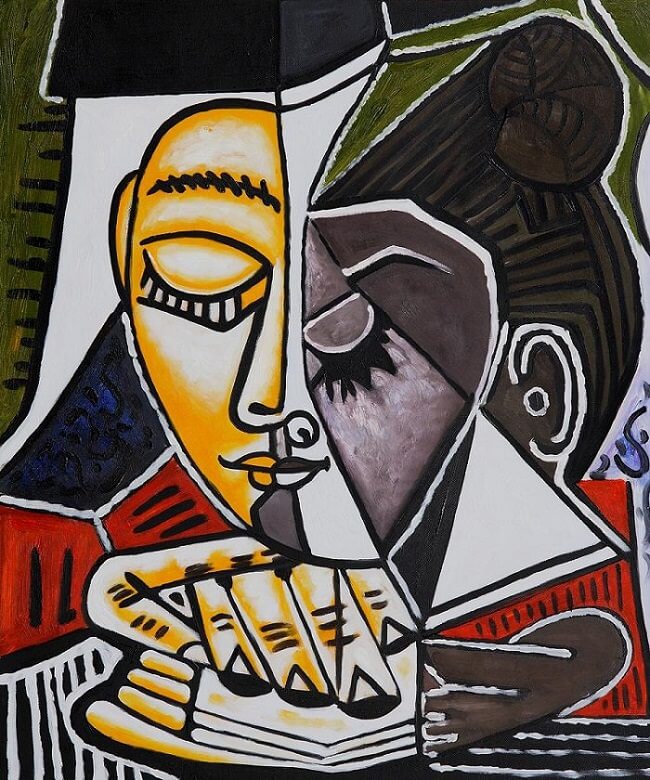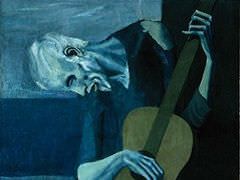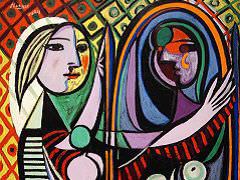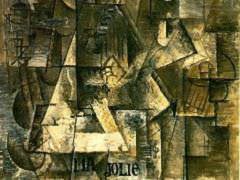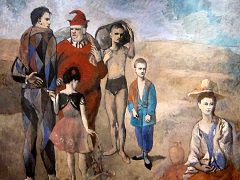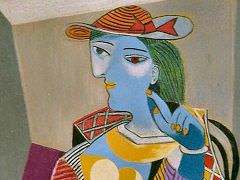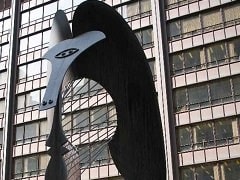Tete d'une Femme Lisant (Head of a Woman Reading), 1953
Picasso's experiments in making flat sculptures were followed up in the early 1960s with a series of works in an entirely new medium and technique. At first Picasso produced small models using folded paper and cardboard, thus
recalling his use of these materials in his early Cubist sculptures. To make the models sturdier, however, Picasso introduced sheet metal. He then pointed the surface of the metal as if it was a canvas, thus producing an
malgam of painting and sculpture.
In this example, Picasso has treated line and color as an independent. Black lines define the features of the sitter, outlining the hair, eyes, nose, mouth, and the shape of the neck and shoulders. However, these lines foil to
contain the non-naturalistic colours that have been randomly applied to model the face. Thus, Picasso odds drawing to his conflation of painting and sculpture. The bold, red line running down the center of the face also makes a
reference to Henri Matisse's (1869-1954) famous Portrait of Lydia Delectorskaya.

